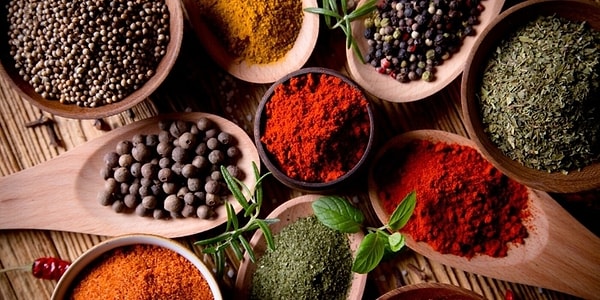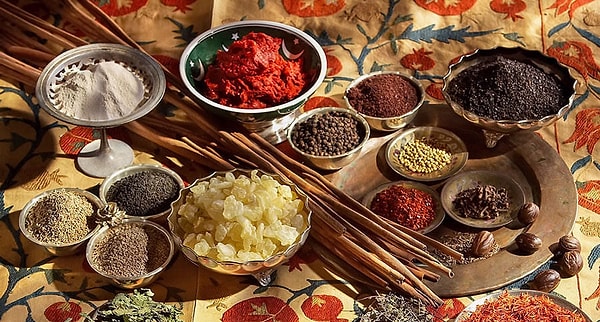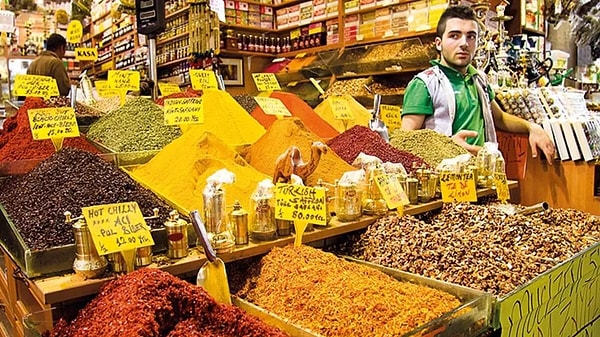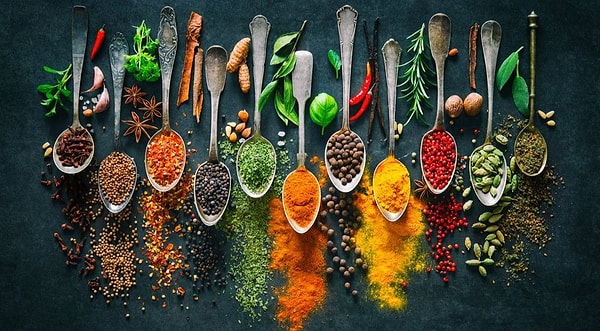Turkish Spice Blends: Elevate Your Dishes with Exotic Flavors
Turkish cuisine is renowned for its rich flavors and aromatic dishes, and at the heart of these culinary creations are the exquisite spice blends that lend them their distinct character. Turkish spice blends, known as 'baharat,' are a testament to the country's diverse cultural heritage and the centuries-old tradition of spice trading. These blends are carefully crafted combinations of herbs, seeds, and ground spices, carefully balanced to create a harmonious symphony of flavors. In this article, we will delve into the enchanting world of Turkish spice blends, exploring their history, composition, and the delightful dishes they enhance. Join us on this flavorful journey through the vibrant spice markets of Turkey.
The History of Turkish Spice Blends:

The history of Turkish spice blends can be traced back to ancient times when the region served as a vital crossroads on the Silk Road, connecting Asia, Europe, and the Middle East. The spice trade flourished, and with it, the exchange of knowledge and flavors. Turkish spice blends emerged as a result of this cultural fusion, incorporating ingredients from various lands and civilizations. Over the centuries, these blends evolved, adapting to the preferences and traditions of the Turkish people, while retaining their essence of exotic spices.
The Composition of Turkish Spice Blends:

Turkish spice blends are a harmonious blend of flavors, carefully balanced to enhance the taste of various dishes. While there are numerous variations, some key spices commonly found in Turkish blends include:
a. Cumin: Known for its warm and earthy flavor, cumin adds depth to Turkish spice blends, imparting a distinctive aroma to dishes.
b. Paprika: With its vibrant red color and mild, slightly sweet flavor, paprika is a staple in Turkish cuisine. It adds a beautiful hue and a subtle smokiness to dishes.
c. Sumac: This tangy spice made from dried and ground sumac berries adds a delightful citrusy note to spice blends, lending a refreshing touch to dishes.
d. Coriander: The fragrant seeds of coriander lend a citrusy and slightly floral flavor to Turkish spice blends, enhancing the overall taste profile.
e. Black Pepper: A staple spice worldwide, black pepper adds a warm and pungent kick to Turkish blends, elevating the flavor of both savory and sweet dishes.
f. Mint: Mint leaves, dried and ground, are often included in Turkish spice blends to provide a refreshing and cool flavor that complements other spices.
Popular Turkish Spice Blends:

a. Baharat: Considered the king of Turkish spice blends, Baharat is a versatile mix that varies from region to region. It typically includes a combination of paprika, cumin, coriander, black pepper, cloves, cinnamon, nutmeg, and cardamom. Baharat is used to season meat, vegetables, soups, and stews, infusing them with a rich and aromatic taste.
b. Za'atar: Although Za'atar is commonly associated with Middle Eastern cuisine, it has also found its way into Turkish kitchens. This blend usually includes dried thyme, sumac, sesame seeds, and salt. Za'atar adds a zesty and herbal touch to roasted meats, salads, and flatbreads.
c. Pul Biber: Known as Turkish chili flakes, Pul Biber is made from dried red peppers that are crushed into flakes. It is commonly used as a table condiment, sprinkled over dishes to add a mild to moderate level of heat. Pul Biber is an essential ingredient in Turkish cuisine, adding a spicy kick to kebabs, soups, and mezes.
d. Nane: Nane, or Turkish mint, is a widely used spice in Turkish cuisine. It is often added to spice blends or used on its own as a standalone herb. Turkish mint has a distinct aroma and flavor, with a refreshing and cooling effect on the palate. It is commonly used in dishes such as lamb kebabs, salads, yogurt-based dips, and traditional beverages like Turkish tea.
Culinary Uses of Turkish Spice Blends:

Turkish spice blends are incredibly versatile and can be used to enhance a wide range of dishes. Here are some popular culinary applications:
a. Grilled Meats: Turkish spice blends, particularly Baharat, are perfect for marinating and seasoning grilled meats such as kebabs, lamb chops, and chicken. The aromatic spices infuse the meat with a tantalizing flavor and create a delicious crust when cooked.
b. Rice and Pilav: Turkish spice blends are often added to rice and pilav preparations, elevating their taste and fragrance. The warm and earthy notes of spices like cumin, coriander, and paprika bring a delightful depth of flavor to these side dishes.
c. Soups and Stews: Adding a sprinkle of Turkish spice blends to soups and stews enhances their complexity and richness. The spices infuse the broth with their aromatic profiles, transforming a simple dish into a flavorful and comforting experience.
d. Vegetable Dishes: Turkish cuisine celebrates the vibrant flavors of vegetables, and spice blends play a crucial role in enhancing their taste. Whether it's roasted root vegetables, sautéed greens, or stuffed peppers, the addition of spice blends adds depth and character to these dishes.
e. Breads and Pastries: Turkish spice blends are also used in baking, particularly in bread and pastry recipes. The subtle spiciness of certain blends, such as Za'atar, can elevate the flavor of bread, while the aromatic notes of cinnamon and nutmeg in Baharat can enhance sweet pastries like baklava.
Exploring Turkish Spice Markets:

No exploration of Turkish spice blends would be complete without a visit to the bustling spice markets, known as 'bazaars.' These vibrant marketplaces are a sensory delight, with colorful displays of various spices, herbs, and blends. Istanbul's Spice Bazaar (Mısır Çarşısı) is a must-visit destination, offering an array of aromatic spices, including the famous Turkish spice blends. Here, visitors can immerse themselves in the intoxicating aromas and flavors, interact with local spice merchants, and discover the essence of Turkish culinary culture.
Embracing Turkish Flavors:

The allure of Turkish spice blends lies not only in their ability to elevate dishes but also in their ability to transport us to a world of exotic flavors and cultural heritage. Incorporating these blends into our own culinary repertoire allows us to embrace the richness of Turkish cuisine and infuse our meals with a touch of the extraordinary. So, why not embark on a flavorful journey and discover the magic of Turkish spice blends in your own kitchen?
Turkish spice blends are a testament to the vibrant culinary traditions of the region.

These carefully crafted combinations of herbs, seeds, and spices add depth, aroma, and complexity to a wide range of dishes. From the iconic Baharat to the zesty Pul Biber and fragrant Nane, each blend offers a unique sensory experience that captivates the palate. So, embrace the flavors of Turkey, explore the spice markets, and let the enchanting world of Turkish spice blends elevate your culinary adventures.
What is your favorite seasoning? Tell us in the comments!
Keşfet ile ziyaret ettiğin tüm kategorileri tek akışta gör!


Send Comment